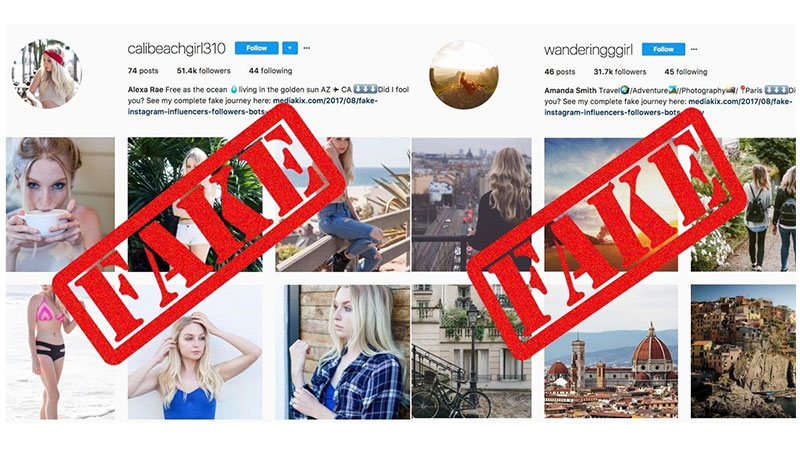In a single day’s worth of posts that have sponsored or ad tags on Instagram, about 50% are fake engagements, according to data from the anti-fraud company Sway Ops.
Influencer fraud is, unfortunately, a real part of social media.
Countless influencers use fraudulent practices to make their influence seem more widespread than it is. Whether fraudsters buy followers or use Instagram pods, fake or stolen content, or bots, avoiding those types of partners is an issue that many companies and brands face.
Brands compensate influencers for sponsored posts based on the number of followers the influencers have. Typical compensation is around $1,000 per post per 100K followers. Not surprisingly, many pseudo-influencers have pursued a quicker way to riches and stardom by buying followers and trying to increase their appeal to brands and also capture higher sponsorship rates. The New York Times reported on this shady side of influencer marketing.
American agency Mediakix made the news last year when they revealed the account ‘Wanderingggirl’ was fake after they had managed to secure paid activity with brands. The recent repeat of the experiment used the same account, and brands contacted the account offering free accommodation and restaurant meals.
Sources in the industry noted that over 16% of the followers of Instagram’s top 20 accounts were suspected to be fraudulent.
One company in the space said they reject over 77% of the Instagram influencers that apply to register with them because of suspicious followers.
On top of all this, a new report from CampaignDeus has revealed that 12 per cent of UK Instagram influencers spent cash on fake followers during the first half of the year.
The report analyzed almost 700,000 posts on Instagram looking for ‘bot-like’ interactions. Signs of “botting” include unusual spikes in followers next to low engagement rates.
The best way to protect your brand from engaging with a fake influencer and from becoming a victim of influencer fraud is to vet and verify influencers before you agree to work with them. What’s the influencer’s story, does he or she have a long history of posting on social media or on a blog or vlog? Or did he or she seeming come from nowhere?
So what can you do? According to InfluencerDB, here are some steps you can take:
- Check for a high audience quality to detect fake influencers.
- An authentic influencer’s follower growth is stable and consistent.
- Daily follower changes can reveal whether an influencer has purchased followers.
- The like-follower ratio shows how active an influencer’s audience is.
- Check the earned media value – the ultimate metric to define an influencer’s value.
- Video views should show a reasonable reach.
- Comments should be rich and diverse.
- Genuine influencers are also visible on other social media platforms (e.g. YouTube, Facebook, Twitter).
- Google results should show valuable external mentions.
If you were wondering, not only are individual influencers really fake — many brands are relying on fake followers and fake engagement. Despite the efforts of platforms to suspend fake influencers, no one escapes the deception: not even the biggest brands! According to a recent North Group Points study, brands like Ritz-Carlton, Pampers and Magnum have invested heavily in campaigns involving artificial influencers.

Ideally, more guidelines will be set by the industry in the near future to ensure this is regulated, but so far it still seems like a wild west.




